
Super Friends is an American animated television series about a team of superheroes which ran from 1973 to 1985 on ABC as part of its Saturday-morning cartoon lineup. It was produced by Hanna-Barbera and was based on the Justice League of America and associated comic book characters published by DC Comics.
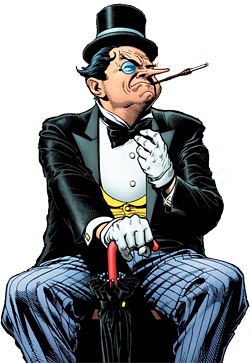
The Penguin is a supervillain appearing in American comic books published by DC Comics, commonly as an adversary of the superhero Batman. The character made his first appearance in Detective Comics #58 and was created by Bob Kane and Bill Finger. The Penguin is one of Batman's most enduring enemies and belongs to the collective of adversaries that make up Batman's rogues gallery.
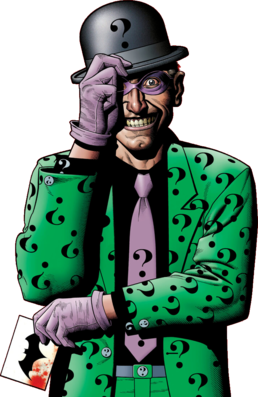
The Riddler is a supervillain appearing in American comic books published by DC Comics. The character was created by Bill Finger and Dick Sprang, and debuted in Detective Comics #140 in October 1948. He has become one of the most enduring enemies of the superhero Batman and belongs to the collective of adversaries that make up his rogues gallery.
The Atom is a name shared by five superheroes appearing in American comic books published by DC Comics.
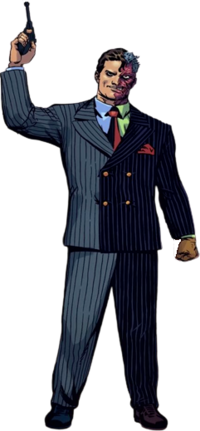
Two-Face is a supervillain appearing in comic books published by DC Comics, commonly as an adversary of the superhero Batman. The character was created by Bob Kane and first appeared in Detective Comics #66. As one of Batman's most enduring enemies, Two-Face belongs to the collective of adversaries that make up Batman's rogues gallery.
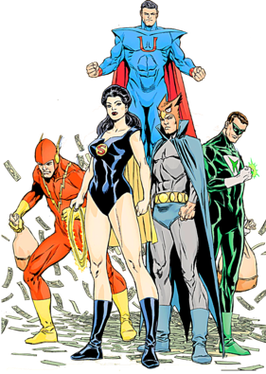
The Crime Syndicate are teams of supervillains from one of DC Comics' parallel universes where they are the evil counterparts of the Justice League. The original team was specifically known as the Crime Syndicate of America and is sometimes abbreviated as CSA. This first superpowered Crime Syndicate team appeared in Justice League of America #29 in August 1964. The primary successive incarnation, known as the Crime Syndicate of Amerika, first appeared in the 2000 JLA: Earth 2 graphic novel.

Clayface is an alias used by several supervillains appearing in American comic books published by DC Comics. Most incarnations of the character possess clay-like bodies and shapeshifting abilities, and all of them are adversaries of the superhero Batman. In 2009, Clayface was ranked as IGN's 73rd-greatest comic book villain of all time.

Hugo Strange is a supervillain appearing in comic books published by DC Comics, commonly as an adversary of the superhero Batman. The character is one of Batman's first recurring villains, and was also one of the first to discover his secret identity. The character first appeared in Detective Comics #36.
Copperhead is the name of several supervillains appearing in comic books published by DC Comics, mostly as enemies of the superhero Batman.

Hush is a supervillain appearing in American comic books published by DC Comics. Created by Jeph Loeb and Jim Lee, the character first appeared in Batman #609 in January 2003 as part of the twelve-issue storyline Batman: Hush. Hush serves as a criminal foil to the superhero Batman and belongs to the collective of adversaries that make up his rogues gallery.

Catman is a character appearing in comic books published by DC Comics. He is part of Batman’s growing roster of enemies, debuting in the mid-1960s.
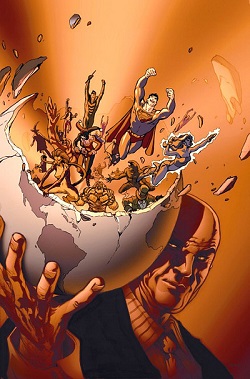
Secret Society of Super Villains (SSoSV) is a DC Comics title that debuted in May–June 1976. The series presented a group of DC's supervillains, mostly foes of the Justice League of America. The series was cancelled with issue #15 in July 1978, as part of the DC Implosion, a period when DC suddenly cancelled dozens of comics.
Blockbuster is the name of four supervillains and a criminal organization appearing in American comic books published by DC Comics. The first iteration was an adversary of Batman and Robin, while the second served as one of Nightwing's greatest enemies. The latest version first appeared in the pages of the series 52 wherein he is directed into battle against Lex Luthor's team of superheroes.

The Wizard is a supervillain appearing in American comic books published by DC Comics.

Doctor Psycho is a fictional character appearing in DC Comics publications and related media, commonly as a recurring adversary of the superhero Wonder Woman. First appearing in Wonder Woman, issue #5 (1943), written by Wonder Woman creator William Moulton Marston, the character would become one of the Amazing Amazon's most persistent enemies, reappearing throughout the Golden, Silver, Bronze, and Modern Age of Comics.
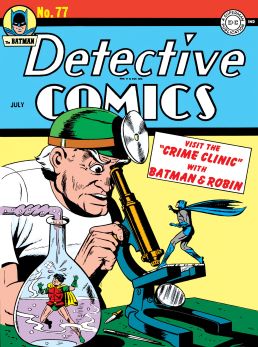
The Crime Doctor is the name of two fictional supervillains that appears in American comic books published by DC Comics. The Crime Doctor is an underworld medical expert who caters exclusively to criminals, originally an enemy of Batman.
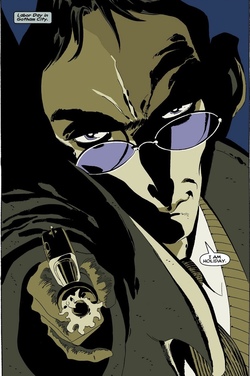
Alberto Falcone is a fictional comic book villain appearing in books published by DC Comics, in particular the Batman books. In addition to being a mobster, he has also made appearances as the Holiday Killer, a serial killer featured in Batman: The Long Halloween and Batman: Dark Victory.
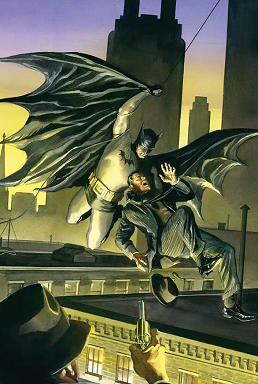
The Batman of Earth-Two is an alternate version of the superhero Batman, who appears in American comic books published by DC Comics. The character was introduced after DC Comics created Earth-Two, a parallel world that was retroactively established as the home of characters whose adventures had been published in the Golden Age of comic books. This provided justification within the fictional world of Batman stories for DC Comics publishing Batman comic books that disregarded the character's Golden Age stories, as Batman had been presented as a single ongoing incarnation of the character since his earliest stories were published.

Gotham Underground is a nine-issue limited series from DC Comics, written by Frank Tieri, with art by Jim Califiore.
















